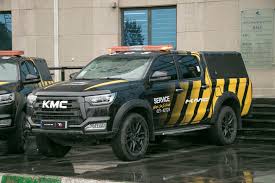Introduction
Vehicles have transformed the way we live, work, and interact with one another. From the earliest days of human civilization to the modern era, vehicles have evolved significantly, reflecting advancements in technology, design, and functionality. This article delves into the various types of vehicles, their technologies, and the latest trends shaping the future of Autovermietung Flughafen Fuerteventura.
Types of Vehicles
- Passenger Vehicles
- Cars: The most common type of vehicle, cars are designed primarily for transporting passengers. They come in various sizes, including sedans, hatchbacks, SUVs, and coupes, catering to different consumer needs.
- Vans and Minivans: These vehicles offer more space for passengers and cargo, making them ideal for families or group travel.
- Commercial Vehicles
- Trucks: Used for transporting goods, trucks come in various configurations, such as pickup trucks, box trucks, and heavy-duty trucks. They are crucial for logistics and supply chain management.
- Buses: Designed for mass transportation, buses are used in public transit systems and for private charter services. They can range from small shuttles to large city buses.
- Two-Wheelers
- Motorcycles: Popular for their maneuverability and fuel efficiency, motorcycles are used for both commuting and recreation.
- Scooters: Smaller and often more affordable than motorcycles, scooters are ideal for urban environments where traffic congestion is common.
- Electric Vehicles (EVs)
- Battery Electric Vehicles (BEVs): These run entirely on electricity and are powered by rechargeable batteries. Examples include the Tesla Model 3 and Nissan Leaf.
- Plug-in Hybrid Electric Vehicles (PHEVs): These vehicles combine a gasoline engine with an electric motor, allowing for both electric-only driving and traditional fuel use.
- Heavy Machinery
- Construction Vehicles: Such as excavators, bulldozers, and cranes, these are essential for construction and infrastructure projects.
- Agricultural Vehicles: Tractors and harvesters are vital for modern farming, enhancing productivity and efficiency.
Vehicle Technologies
- Internal Combustion Engines (ICE)
- Traditional vehicles are primarily powered by ICE, which uses gasoline or diesel fuel to generate power. These engines have evolved significantly, with advancements in fuel efficiency and emissions reduction.
- Electric and Hybrid Technologies
- Electric vehicles utilize electric motors powered by batteries, offering zero emissions during operation. Hybrid vehicles combine both electric and traditional engines, allowing for greater flexibility and fuel efficiency.
- Autonomous Vehicles
- Self-driving technology is revolutionizing the automotive industry. Companies like Waymo and Tesla are at the forefront of developing autonomous vehicles that use sensors, cameras, and artificial intelligence to navigate without human intervention.
- Connected Vehicles
- Modern vehicles increasingly feature connectivity options that allow them to communicate with each other and infrastructure. This technology enhances safety, enables real-time traffic updates, and supports advanced navigation systems.
- Advanced Driver Assistance Systems (ADAS)
- Features such as adaptive cruise control, lane-keeping assist, and automatic emergency braking are becoming standard in many new vehicles, improving safety and convenience.
Trends Shaping the Future of Vehicles
- Sustainability and Eco-Friendliness
- The automotive industry is shifting towards more sustainable practices, including the use of recyclable materials, reduced emissions, and electric vehicle production.
- Shared Mobility
- Ride-sharing and car-sharing services are becoming increasingly popular, reducing the number of vehicles on the road and promoting efficient use of resources. Companies like Uber and Lyft exemplify this trend.
- Urban Mobility Solutions
- As urban areas become more congested, innovative transportation solutions such as e-scooters, bikes, and public transit improvements are gaining traction.
- Vehicle Personalization
- Consumers are increasingly seeking customizable vehicles that reflect their personal style and preferences, from aesthetic modifications to technology integrations.
- Regulatory Changes
- Governments worldwide are implementing stricter emissions regulations and incentives for electric vehicle adoption, influencing manufacturers’ strategies and consumer choices.
Conclusion
Vehicles play an integral role in modern society, facilitating mobility and connecting people. As technology continues to advance, the automotive landscape is evolving towards more sustainable, efficient, and innovative solutions. Understanding the various types of vehicles, their technologies, and emerging trends provides valuable insights into the future of transportation and its impact on our daily lives. Whether it’s the shift to electric vehicles, the rise of shared mobility, or the development of autonomous technologies, the journey of vehicles is just beginning.
